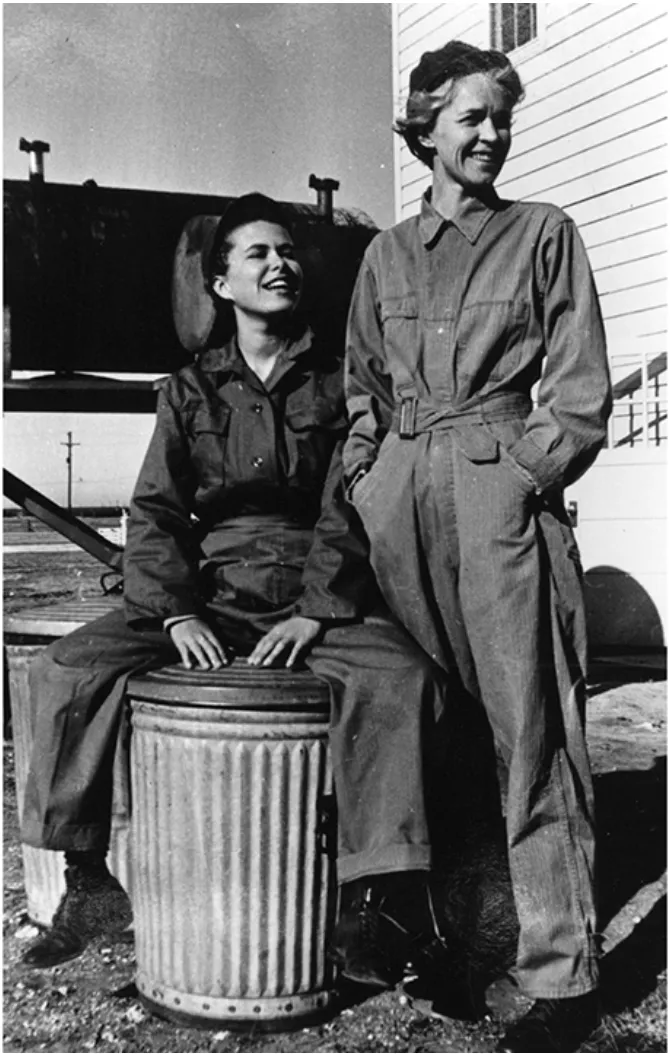 Phyllis Arby and Mildred, Women’s Army Auxiliary Corps. Image courtesy of Deep Focus Productions.
Phyllis Arby and Mildred, Women’s Army Auxiliary Corps. Image courtesy of Deep Focus Productions.
Born in 1920, her teenage years were full of hardships. After writing a love letter to a girl at her school, she was expelled and kicked out of her home by her father, before moving to New York to live with her mother.
For Arby, enlisting in the WAAC during the Second World War was a brief escape from societal norms that she struggled to fit into. She enjoyed wearing the uniform, and was able to meet other lesbians there, although she still had to hide her sexuality.
Homosexuality was criminalised until 1962 across most States and military servicemen could not be ‘openly gay’ in the United States until as late as 2011. In a documentary film entitled Coming Out under Fire, she recalled that she was asked if she had had sex with men and replied no with acceptable but false reasons.
While taking a course in radio repairing at the United Radio Television Institute, she met Mildred and their relationship began. Both Arby and her lover were selected to feature in their recruitment propaganda, although the military had no idea and no intention of of recruiting lesbians.
When the Second World War ended, Arby struggled with her identity. Enlisting in the military gave her independence and comfort, a space where she didn’t have to conform to the expected standards of womanhood. The end of the war meant she had to suppress her sexuality again, homosexuality being further stigmatised in the 1950s, including being banned from federal employment by Executive Order 10450 signed in 1953 by President Eisenhower
Although she continued a relationship with Mildred after the war, they separated when she went to college at the University of Nevada in Reno. There she met a man named Abe Kaplan whom she married in 1950 and raised four children with. She died in 1995 at the age of 75.
Prior to her death, she looked back on her life stating, "I could never forget who I really was.”
Phyllis Arby's story highlights the double identity that LGBT + service personnel had to lead, being forced to hide their sexuality due to fear of dismissal, prosecution and stigma. For many, it became a choice between career and having a fulfilling relationship, this ban leading to many servicemen and women being ostracised and shamed by the country they sought to protect.